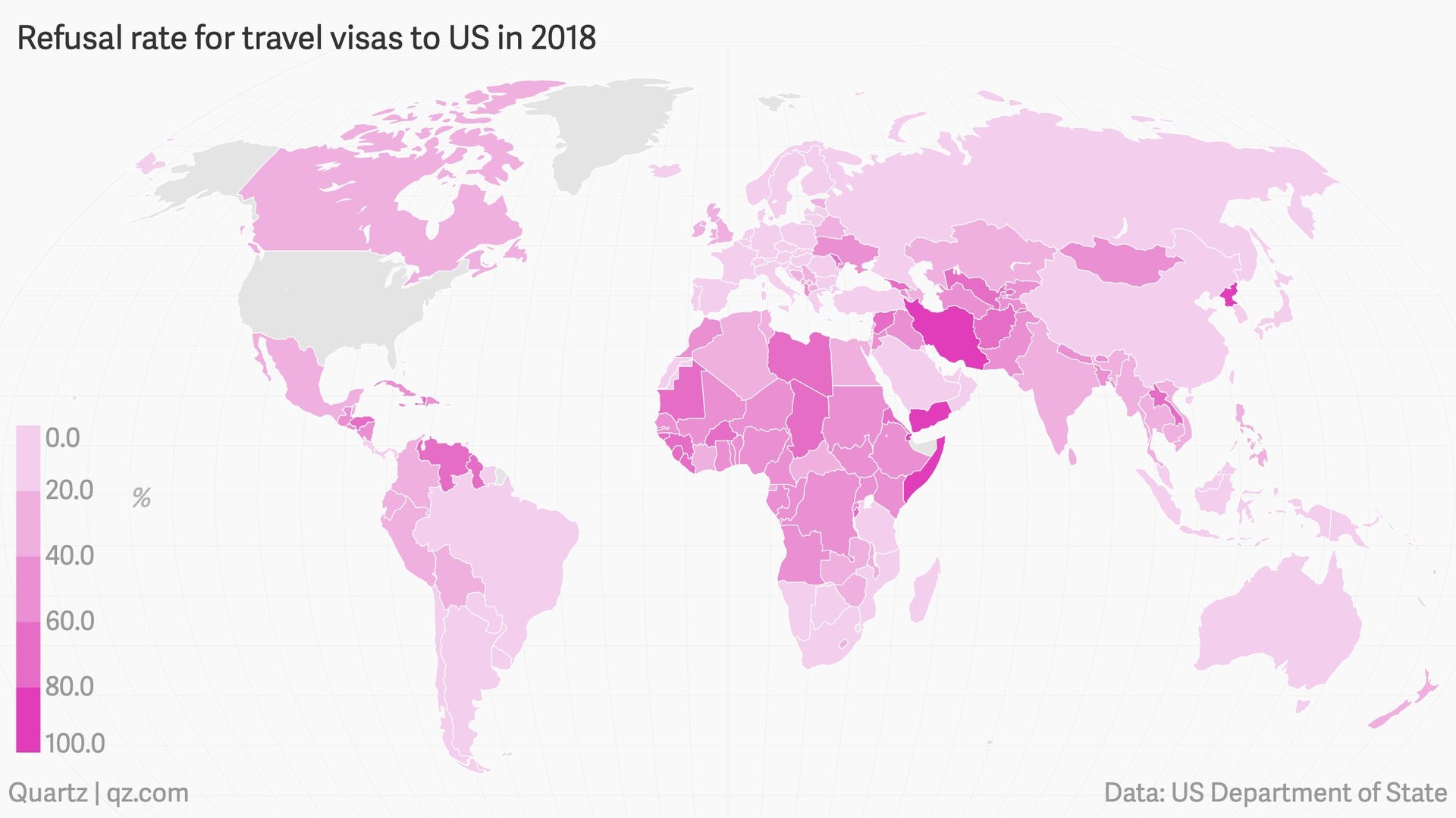What are the chances of being rejected for a travel visa to the US?
Nearly 6.4 million people came to the United States on a B visa in 2017. This common visa type—B-1, for business travel; B-2, for tourism; or the combo B-1/B-2, for a bit of both—is issued for short-term travel to the US. If you plan to attend business meetings or conferences, spend a week on vacation in Hawaii or Florida, or visit family in the US, this is the visa you’re likely to need.


Nearly 6.4 million people came to the United States on a B visa in 2017. This common visa type—B-1, for business travel; B-2, for tourism; or the combo B-1/B-2, for a bit of both—is issued for short-term travel to the US. If you plan to attend business meetings or conferences, spend a week on vacation in Hawaii or Florida, or visit family in the US, this is the visa you’re likely to need.
Not everyone requires one, of course. Citizens of 38 countries are eligible for the ESTA visa waiver system, allowing them to bypass ordinary visa requirements for short-term business or tourist travel. They are mostly rich nations in Europe and Asia.
But despite how common the B visa is, getting one isn’t as easy as it might appear. Applicants must pay a fee, apply online, and then attend an in-person interview, where they’ll be grilled on what their plans are, where they’ll be going, and—crucially—when they plan to leave the US. Processing time from there can take as much as two months.
Even then, many people find their applications rejected. In fiscal year 2018—which ran from October 1, 2017 through September 30, 2018—B visa applicants from around 50 countries were more likely to have their application refused than accepted. For citizens of Somalia, the refusal rate was more than 90%, with only 38 Somalis granted a B visa (pdf).
The table below shows the refusal rates for each country with at least 10 visas issued in fiscal year 2018, according to data from the US Department of State (pdf). The overall refusal rate, including countries with 10 or fewer visas issued, was 32.4%.
Refusal rate for travel visa applications, by country, in fiscal year 2018